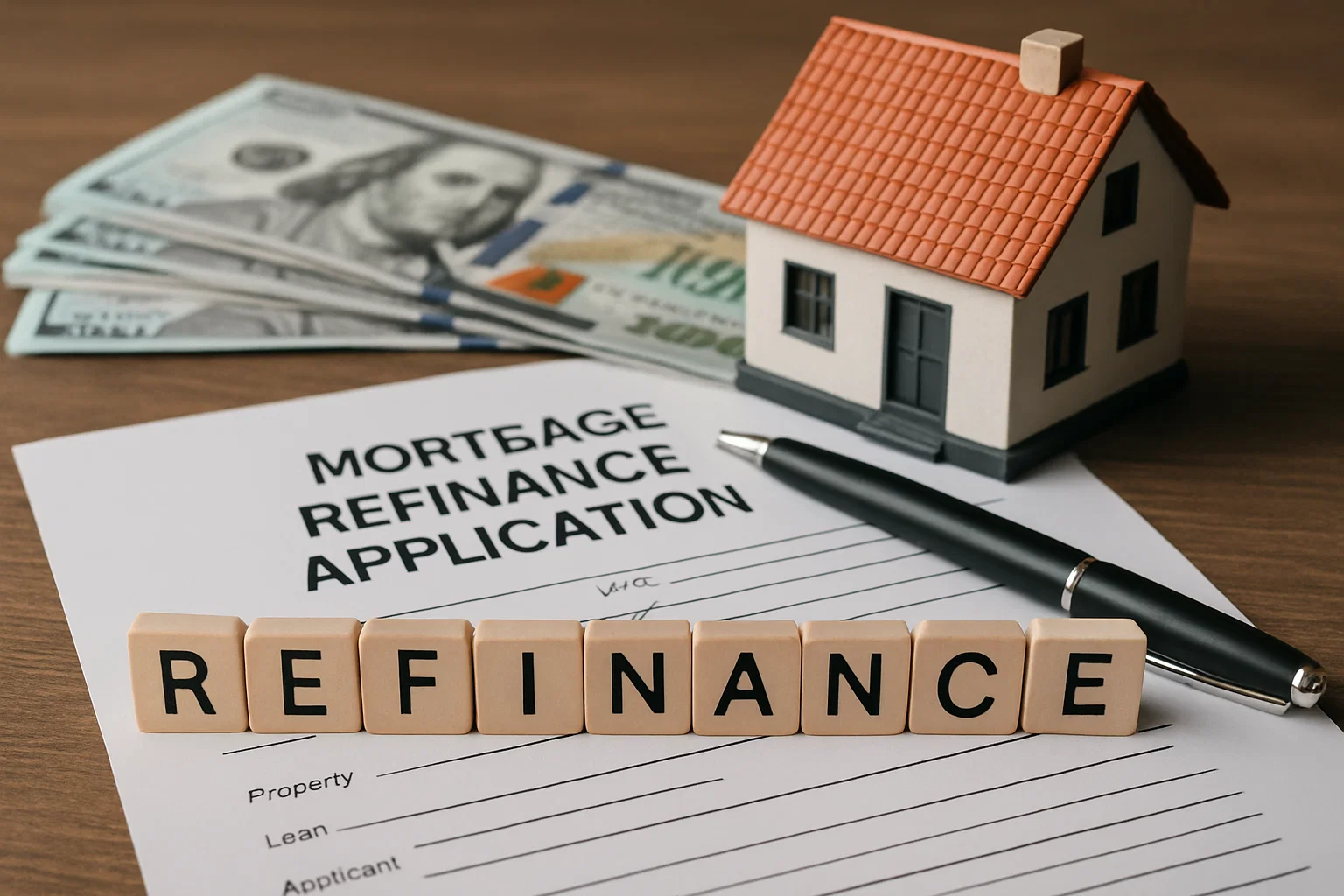
Refinancing your home loan is a strategic financial lever that can dramatically alter your economic landscape, yet it remains one of the most underutilized tools in the average borrower's financial arsenal. The process replaces your current loan with a new agreement featuring terms that better reflect today's lending environment and your evolved financial capabilities. What makes refinancing especially powerful is its ability to serve multiple purposes simultaneously—it can reduce your immediate financial stress through lower monthly payments, accelerate your wealth-building timeline by eliminating debt years earlier than originally planned, or provide access to capital for strategic investments without resorting to expensive consumer credit. The difference between borrowers who thrive financially and those who struggle often comes down to recognizing and acting on refinancing opportunities at the right moments.
The lending industry has undergone significant transformation, with technology-driven platforms and increased competition creating an environment where borrowers hold more negotiating power than ever before. Financial institutions actively compete for refinance business, offering promotional rates, reduced fees, and expedited approvals to attract customers from competitors. This market dynamic creates fertile ground for informed borrowers to secure terms that substantially improve their financial positions. However, extracting maximum value requires sophisticated analysis that goes beyond comparing advertised rates to encompass total cost evaluation, strategic timing assessment, and disciplined post-refinancing financial management that converts immediate savings into long-term wealth accumulation and financial independence.
Identifying Prime Refinancing Conditions

Credit transformation and borrower profile enhancement creates powerful refinancing opportunities that exist independently of broader market interest rate movements. Your financial identity today likely bears little resemblance to your profile from several years ago when you originally secured your loan. Consistent on-time payments across all financial obligations, systematic debt reduction through disciplined paydown strategies, and lengthened credit history through responsible account management typically improve credit scores substantially over multi-year periods. Moving from the 680-710 credit score range into the 750-plus category crosses critical lender thresholds that unlock premium pricing tiers offering dramatically better interest rates. These improvements reflect reduced lender risk and translate directly into lower borrowing costs that compound into significant savings over remaining loan tenures. Income evolution through career advancement, successful business growth, or dual-income household formation strengthens your debt-to-income ratio, demonstrating enhanced repayment capacity that lenders reward with favorable terms and increased borrowing flexibility.
Property equity accumulation and market appreciation strengthens your refinancing position while potentially unlocking new financial strategies unavailable when you originally purchased. The combination of principal paydown through regular loan payments and property value appreciation through market dynamics, neighborhood development, or strategic renovations creates growing equity that fundamentally alters your borrowing profile. Lenders view substantial equity percentages favorably since they provide cushion against potential default scenarios—borrowers with 40-50% equity typically access the most competitive rates and favorable terms:
- Major home improvements completed since purchase increase property valuations, improving loan-to-value ratios and potentially qualifying you for better refinancing terms
- Infrastructure development in your area, improved local amenities, or general real estate market appreciation enhances property values independently of your actions
- Strategic cash-out refinancing allows accessing accumulated equity for additional property investments, business ventures, or education expenses at favorable mortgage rates
- Higher equity percentages provide substantial negotiating leverage with lenders competing aggressively for borrowers with strong financial profiles
Life stage transitions and changing financial priorities create natural refinancing moments when your circumstances shift substantially from your original loan approval. Mid-career professionals experiencing significant income growth often benefit from refinancing to shorter loan tenures, accepting higher monthly payments in exchange for dramatically reduced total interest and faster debt elimination before retirement. Conversely, temporary financial pressures from business challenges, medical expenses, or family obligations might necessitate tenure extensions reducing required monthly payments, preventing default while preserving credit standing despite increasing lifetime interest costs. Marriage creating dual-income households strengthens refinancing applications and improves affordability, while career transitions or entrepreneurial ventures might require restructuring to match changed income patterns and financial realities.
Mastering Refinancing Execution and Optimization

Meticulous financial preparation and documentation excellence establishes the foundation for securing premium refinancing terms that maximize value extraction. Begin your refinancing journey 3-6 months before formal application by obtaining comprehensive credit reports from all major bureaus, carefully reviewing for errors, outdated information, or discrepancies that might artificially suppress your score. Dispute any inaccuracies through formal channels and follow up persistently until corrections appear. Focus on strengthening your credit profile through targeted actions: reduce credit card balances to below 30% of available limits; ensure all existing payments arrive consistently on time; avoid new credit applications generating hard inquiries. Simultaneously, assemble complete documentation packages including recent income proofs spanning appropriate verification periods, tax returns for 2-3 years with detailed computations, bank statements demonstrating consistent savings patterns and financial stability, existing loan details showing excellent payment history, and comprehensive property documentation verifying ownership and value. Organize these systematically, providing more than minimum requirements to demonstrate financial sophistication and accelerate approval timelines.
Aggressive lender comparison and strategic negotiation determines whether you secure exceptional terms or settle for mediocre deals barely justifying refinancing effort and expense. Request detailed proposals from 5-7 different lenders spanning traditional banks, housing finance companies, and innovative digital platforms. Each institution evaluates risk differently and offers varying terms based on their funding costs, internal risk models, and competitive market positioning. Create standardized comparison frameworks evaluating complete cost structures—processing fees ranging from 0.25-2% of loan amount, legal charges, property valuation expenses, prepayment penalties affecting future flexibility, and restrictive covenants limiting your financial options. Calculate annual percentage rates incorporating all costs into single comparable metrics for accurate evaluation. During negotiations, present competing offers requesting rate matching or substantial fee reductions. Lenders maintain considerable flexibility beyond published rates, particularly for borrowers with strong credit profiles and substantial property equity—request processing fee waivers, prepayment penalty elimination, or direct rate improvements, understanding that assertive but respectful negotiation frequently yields meaningful concessions worth thousands of rupees.
Post-refinancing wealth acceleration and strategic deployment transforms temporary monthly savings into permanent financial security through disciplined resource management. If refinancing reduces monthly EMI by ₹7,000-9,000, resist lifestyle inflation consuming these newfound savings. Instead, maintain your previous higher payment amount, directing the difference toward additional principal prepayment that dramatically shortens your loan tenure beyond official terms and saves substantial additional interest. Establish systematic investment plans channeling monthly savings into diversified equity mutual funds or other growth-oriented instruments generating potential returns exceeding your loan interest rate, simultaneously reducing debt while building investable assets. Build robust emergency reserves covering 6-12 months of expenses before pursuing aggressive investment strategies, ensuring unexpected financial shocks don't jeopardize loan payments and credit standing. Review your refinanced loan annually to stay alert for additional refinancing opportunities if rates decline further or your financial profile strengthens through continued income growth, credit improvements, or equity accumulation.
Refinancing succeeds when approached as comprehensive financial optimization requiring strategic analysis, thorough preparation, aggressive comparison shopping, skilled negotiation, and disciplined post-refinancing implementation. Borrowers who invest effort in understanding their complete financial pictures, evaluating all available options systematically, and deploying savings strategically consistently achieve superior outcomes that compound into substantial long-term financial security and accelerated wealth accumulation over time.

Alex Chen

Alex Chen













Get in touch with a loan officer
Our dedicated loan officers are here to guide you through every step of the home buying process, ensuring you find the perfect mortgage solution tailored to your needs.
Options
Exercising Options
Selling
Quarterly estimates
Loans
New home

Stay always updated on insightful articles and guides.
Every Monday, you'll get an article or a guide that will help you be more present, focused and productive in your work and personal life.









.png)
.png)
.png)
.png)
.png)
.png)
.png)
.png)
.png)
.png)
.png)
.png)
.png)
.png)
.png)
.png)
.png)
.png)